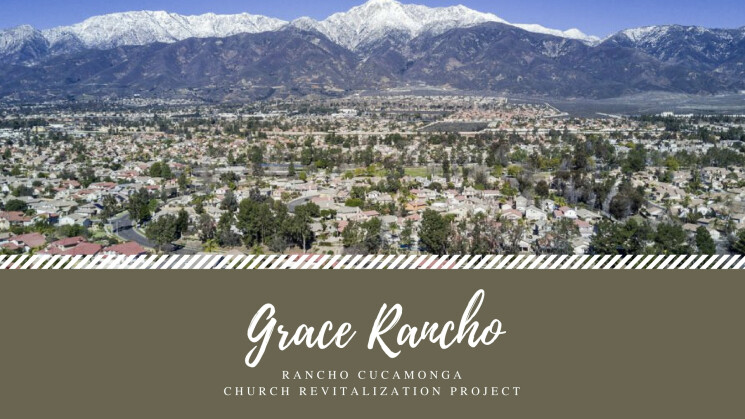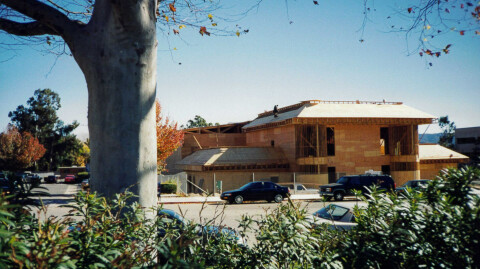
The following post is part 2 of 3 in a series. You can read part 1 , "Revitalization: Our Moment" here.
Trends. If you try to follow them too closely you’ll end up turned around, upside down and backwards, like the clothing on my three-year-old when she dresses herself. But if you don’t pay attention, you could miss out on some crucial opportunities. I mentioned in the last post that we’re in the middle of an upsurge of interest in sound doctrine. John Macarthur, doing a Question and Answer with R.C. Sproul a couple years ago, said, “We’re seeing the greatest explosion of reformed theology in the history of the world.” This explosion has led to the a huge increase in church plants, church planters, and church planting networks.
Running alongside this growth there seems to be another trend that’s gaining traction, and unlike some fads in the church, this one is positive: church revitalization.
We are praising God for the recent church planting trend. But church planters are in a difficult place. My father-in-law heads a network of churches that coordinates and supports church planting efforts. He tells me repeatedly that church planters are always wishing they had a building of their own, a property they could use. Doing “church-in-a-box,” where all your church gear - sound boards, chairs, mics, music stands, etc. - is set up and torn down every weekend, is exciting for about six months. And then it’s tiresome. Volunteers with growing families will only be able to do that for so long. Having a hub from which to do ministry, to call your own, is a blessing, it turns out. This is what church planters long for.
Unfortunately, there are certain places in America where it’s extremely difficult to buy and purchase land. Urban centers, where millions of people live and work, are so overbuilt and expensive that no fledgling church is going to be able to own property. Who’s able to buy property in Southern California, or New York, or D.C.? We need new churches in these places, but it’s a long shot to get ahold of your own land. Property, especially in these kinds of places, is a precious asset.
Imagine a scenario: Would the churches who bought land in those locations in the last century or so please stand up? They stand. Thousands of these churches in strategic locations are close to dying. The buildings are empty and about to be sold, demolished and turned into tract homes or apartment buildings. Okay. Now, let’s have the young, energetic church plants stand up. Let’s shake hands. Something seems obvious. What do we do when we have lots of people with no building, and lots of buildings with few people? What do you do with a square peg and a square hole?
Granted, I understand that it’s not that simple. Different denominations with doctrinal distinctives won’t want to give their property to churches they don’t know or agree with. I also understand there are some advantages that church planting has over church revitalizing. For starters, church plants can move quickly, make decisions without fearing any baggage or history, and design what they want from the ground up without encountering resistance or fear of change. But there are some advantages to church revitalization. Consider these:
- Church revitalization is an opportunity to demonstrate the power of God. Personally, this is the greatest motivation I have for getting involved in church revitalization. Every believer echoes Moses’ ancient request to God: “Please show me your glory” (Ex. 33:18). I want to have front row seats as God demonstrates his power and glory, and what better place to experience this than a church where death gives way to live, the lost are found, the sick are healed, and the guilty forgiven? The glory of Christ shines forth in the lives of the redeemed, and I want to see this up close. I want the community to see it. We are asking that God uses this church revitalization project to demonstrate his power and glory. If at some point there is a healthy, thriving church there in Alta Loma, we will be able to say, "God did this- to him be the glory!"
- Church revitalization is an opportunity to establish a more accurate picture of Jesus. What does an empty church and a dwindling gathering of tired believers communicate to the world? It communicates the same thing a nominal Christian does-- that Jesus is irrelevant. While I praise God for faithful small churches, and even recognize that healthy churches can have seasons of decline, I am concerned about dying churches. Dying churches littering the landscape are not neutral in what they represent. They affirm to unbelieving onlookers something untrue about God. Revitalization does not merely seek to establish a true and beautiful picture of Christ in a community, it seeks to eliminate a false one. It’s really a two-for-one deal.
- Church revitalization is an opportunity to utilize resources for the gospel. A building is not a church, but a church with a building has something precious to steward. God has given them land, a plot in the ground they can call their own. Every square inch in this universe belongs to Jesus, and at least on the grounds that a church owns, that great reality of the Lordship of Christ can be played out. For many dying churches, buildings and bank accounts are not being used much. Some precious saints put in money toward the advance of the gospel decades ago, and it’d be a shame to see it forfeited to the world on our watch. One of the ways we can honor the generations who went before us is to continue the work for which they bought the property in the first place: faithful proclamation of the Word of God and the clear presentation of the gospel.
- Church revitalization is an opportunity to shepherd older, precious saints. I recently sat down with a member of such a church and he told me how difficult it is to find someone who could minister to their congregation. Who would want to touch a church with a decrepit building, a tiny congregation, and uncertain financial situation? Keep in mind that many members of these churches are old and infirm, looking mortality in the face. It’s a travesty for a precious, aged saint to die without a church family to love and care for them in their final hours. A church revitalization is an opportunity to care for an often-marginalized segment of our youth-centered culture: the elderly.
I am praying that many older, dwindling churches will, with the Lordship of Christ and the Great Commission in view, hand over their property to like-minded, faithful, youthful church plants. Church revitalization is a strategy with a future. The broader body of Christ already possesses the land. We have the resurgence in the younger, growing movement of healthy, gospel-centered churches. Wouldn’t it be great if God would raise up thousands of church revitalizers who would go into old, dying churches and help bring them back to health?
And isn’t this great that God has allowed us seize such an opportunity?




